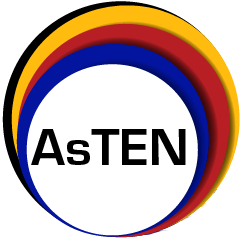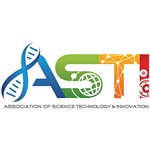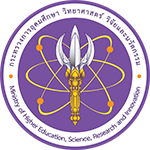How today’s education leaders are blending adaptability, collaboration, and innovation to drive lasting learning impact.
Strong-performing schools don’t emerge by chance. They thrive under leaders who combine vision with the ability to inspire great teaching. In education, leadership goes far beyond managing budgets or timetables; it’s about cultivating environments where teachers can excel and students can flourish.
A discussion on “Effective school leadership” at Bett Asia 2025 brought together several education leaders, including Suguna Devi (CEO of Asian Institute of Technology Malaysia), Animesh Priya (Chief of Partnerships at Global School Leaders), Dr Jerrylyn Bacroya-Magbuo (Dean of Colleges of Arts, Sciences, and Education at FAITH Colleges, Philippines), and Peter Duffy (Academic Director at Newcastle Australia Institute of Higher Education (NAIHE)). Together they shared insights from diverse contexts, exploring how today’s leaders can drive innovation, navigate the age of AI and technology, and nurture the next generation of teacher-leaders. What emerged was a compelling portrait of leadership grounded in adaptability, empathy, and connectedness.
Leadership qualities and motivation: Leading with foresight and grit
At the foundation of effective leadership lies a clear sense of purpose. School leaders operate in complex environments, often marked by limited resources, competing priorities, and constant change. The discussion highlighted that foresight, adaptability, and determination are not simply desirable traits, they are essential survival skills.
Grit enables leaders to remain focused on long-term goals even when immediate challenges seem overwhelming. Adaptability ensures they can pivot in response to evolving educational landscapes, policy shifts, or unexpected disruptions such as global pandemics. Yet, what distinguishes exceptional leaders is the ability to motivate others through passion and clarity of purpose.
In cultivating future teacher-leaders, this kind of influence matters profoundly. When leaders model perseverance and optimism, they foster similar qualities among their staff, setting the tone for a resilient school culture where teachers feel empowered to innovate rather than constrained by fear of failure.
Technology and change management: Guiding teams through transformation
Technology continues to redefine what it means to lead a school. The shift to blended learning and digital ecosystems has introduced new challenges in professional development, infrastructure, and equity. The discussion underscored that effective school leaders must become agents of change, guiding teachers through uncertainty while maintaining focus on student outcomes.
Successful change management begins with empathy and support. Leaders must recognise that technology integration is not simply about acquiring devices or adopting platforms, but about nurturing confidence, competence, and curiosity among staff. Professional learning, mentoring, and shared experimentation were emphasised as powerful tools for helping educators adapt to digital transformation.
Ultimately, technological leadership is less about mastering every tool and more about enabling a culture where teachers feel supported to explore new approaches that enhance learning and engagement.
Instructional leadership and feedback: From evaluation to empowerment
One of the most significant themes to emerge was the shift from evaluative to collaborative models of instructional leadership. The 2024 UNESCO Global Education Monitoring (GEM) report contains four recommendations:
- Trust and empowerment
- Selection and development
- fostering collaboration
- Investing in system leaders
These recommendations were cited as a practical framework for rethinking leadership structures. Trust forms the cornerstone of effective schools. Leaders who empower teachers rather than merely appraise them create conditions for professional growth. Feedback becomes an opportunity for dialogue rather than judgment, and coaching replaces compliance.
The conversation emphasised that great instructional leaders don’t inspect teaching; they co-construct it. They focus on continuous improvement through shared reflection, data-informed strategies, and open communication. This collaborative approach not only strengthens teacher morale but also leads to more consistent gains in student achievement.
Personal leadership styles: The power of self-awareness and connection
While leadership training programs provide frameworks and competencies, the most effective leaders learn to integrate these lessons with their personal values and experiences. The panel reflected on how leadership evolves after formal training, balancing systematic practices with authenticity.
One approach emphasised structured communication and transparent feedback loops, ensuring teachers understand not only what decisions are made but why. This builds trust and reduces resistance to change. Another mentioned the value of networks and self-directed learning, suggesting that modern leaders must remain lifelong learners themselves.
Leadership, then, becomes less about authority and more about relational influence: knowing when to listen, when to act, and when to connect others to opportunities that help them thrive.
The Global School Leaders (GSL) network: Collaboration beyond borders
In an interconnected world, leadership development no longer happens in isolation. The Global School Leaders (GSL) network was cited as a powerful example of how cross-country collaboration can strengthen education systems worldwide.
The network’s evolution from a content-provider to a community of shared practice reflects a broader trend: educators are seeking not just resources, but relationships. Access to peers from the Global North and South allows leaders to exchange strategies, learn from diverse contexts, and co-create localised solutions to common challenges.
Crucially, the conversation highlighted that resources alone are insufficient. Implementation support and contextualisation, understanding how global best practices fit local realities, are what make professional learning truly transformative. Partnerships with organisations and new regional connections across Southeast Asia demonstrate the network’s growing impact in fostering leadership ecosystems tailored to specific cultural and systemic needs.
Beyond saving time and reducing duplication, such professional networks amplify innovation. By sharing tested strategies and insights, leaders can adapt proven approaches more effectively than traditional top-down training often allows.
Balancing individuality with standardised training
A recurring question for education leaders is how to maintain individuality while participating in standardised leadership programs. The discussion reaffirmed that structure and personal style are not mutually exclusive; rather, they complement each other.
Leaders can honour institutional frameworks while expressing their own values through communication, collaboration, and empathy. Training programs provide the tools, but how those tools are applied depends on the leader’s self-awareness and context.
Post-training, networks become essential spaces for reflection, experimentation, and growth. They allow leaders to exchange experiences, troubleshoot challenges, and celebrate successes, ensuring that learning extends well beyond the classroom or workshop.
The synthesis of standardised learning and personal authenticity enables leaders to sustain long-term engagement and model the very qualities they wish to cultivate in their teams, such as resilience, curiosity, and adaptability.
Leadership for lasting impact
Effective school leadership is not a static skillset, it’s a living practice rooted in empathy, adaptability, and continuous learning. The global conversation underscored that leaders today must balance system demands with human connection, technology with pedagogy, and structure with creativity.
By fostering cultures of trust, supporting teachers through change, and connecting across networks, school leaders can transform not only their institutions but the broader ecosystems they belong to. In doing so, they ensure that great teaching and inspired learning remain at the heart of every thriving school.








.png?ext=.png)




.png?ext=.png)



.png?ext=.png)







.png?ext=.png)

.png?ext=.png)

.png?ext=.png)



-4000px-(2).png?ext=.png)




